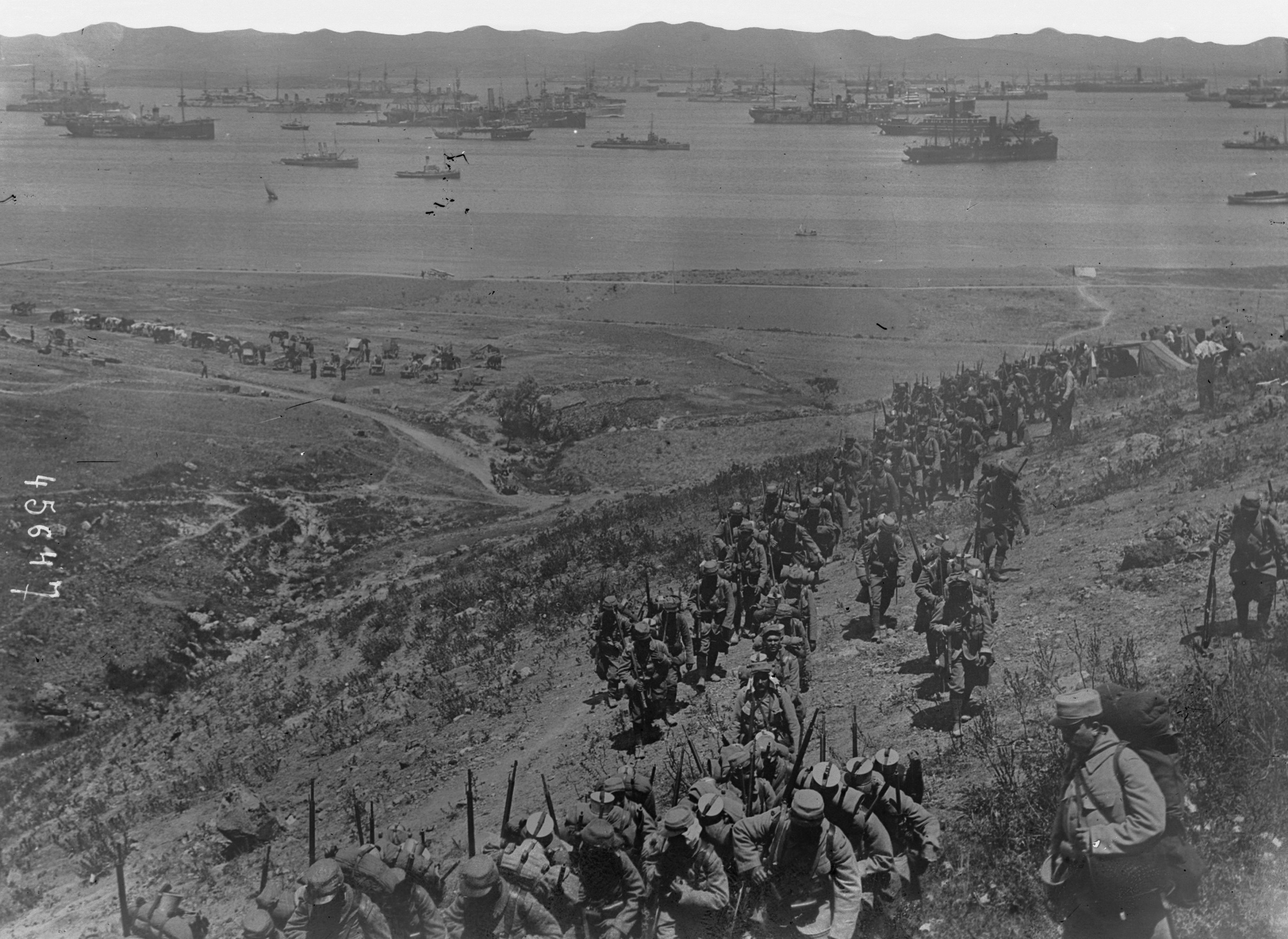Welcome back to the Armory. Given that the anniversary of D-Day was only last week, we were going to be going over some of the amphibious operations and landing craft of the Second World War. Developing the historical context for this has gone on a little longer than expected, so this article will be a two-parter. The first part will be focused on naval landings thought history leading up to WW2, and part two will explicitly focus on the Second World War in Europe.
We also have a massive sale currently ongoing for many of our World War 2 titles. Now is a great time to pick these up either on Steam or the Matrix Store.
Now, whats history without a little context? While whole armies almost never fought pitched battles on the beach, there were still opposed landings with what we might call very heavy skirmishing, or small battles. Caesar reports in his Commentaries on the Gallic War that when he invaded Britain, his troops were reluctant to leave their ships and charge the British tribesmen taunting them from the shore. It was only when a standard bearer charged forward alone that other legionaries followed him rather than risk the shame and dishonor of losing the standard. The legionaries proceeded to storm the beachhead and drive off the British tribesmen.

A Constatine-era inscription of a Roman standard bearer. Losing the standard was exceptionally shameful for Roman soldiers.
Amphibious operations in antiquity and the middle ages were tremendously limited by weather and season. Most galleys and fleets were reluctant to leave site of shore due to fears of storms and navigational mishaps. Sailing via galley was also so manpower intensive that any deployment was heavily constrained by access to fresh water. Oftentimes, ancients fleets wouldn't even spend the night at sea, and would prefer to beach their crafts to sleep and draw fresh water from shore.

Artwork of later Imperial Roman Liburnians, a less manpower-intensive galley that acted as a patrol craft for both the coast and riverine operations.
Whole fleets could be wrecked and destroyed by a single powerful storm, as the Romans discovered when they withdrew from Africa during the First Punic War. At Camarina a Roman fleet, having previously defeated the Carthaginians, sank with upwards of 100,000 dead reported. Naval operations were risky, and they were constrained in their approach by nature and logistics.

A 19th century artists interpretation of the Battle of Mylae. Ancient naval battles often took place close to the shore.
Skipping ahead almost two millennium to the 18th and 19th century, and a host of innovations had made naval operations far more feasible. Ships had gotten far larger and less manpower intensive as oars were largely supplanted by sophisticated sailing rigs. The increasing seaworthiness and navigational tools available to ships in the 18th century made not only global trade possible, but also global colonial military operations. In the American War of independence the British conducted multiple naval operations to withdraw from besieged Boston and attack New York and, later in the war, Charleston. The British were also able to send regular reinforcements of both Redcoats and Hessian mercenaries from Europe, across the Atlantic ocean. A journey that could take up to a month if the weather didn’t cooperate.

Hessian mercenaries, in this case Hussars, serving in the British army in North America during the American War of Independence.
It was only after the British lost naval supremacy in the Chesapeake that a combined Franco-American army and naval force could besiege and capture Cornwallis’s army at Yorktown, effectively ending the war on the American continent.

Cornwallis surrender at Yorktown. This was made possible in large part by the presence of a French fleet blockading the British.
By the 19th century the tyranny and capriciousness of wind and tides had been overcome with the invention of the steam engine. A fleet no longer had to rely on seasonal winds when planning operations. Conflicts like the Crimean War saw large deployments of British and French troops to the Black Sea, requiring sophisticated supply chains feeding and arming hundreds of thousands of troops (although in this conflict most of the warships and transports were still sail-powered). Heavily armed and armored monitors and river patrol craft could project power up and down harbors, estuary's, and river ways. Famously during the American Civil War the Union and Confederacy experimented with new designs of ironclads and river monitors.

The famous clash at Hampton Roads between ironclads, the Union Monitor and Confederate Merrimac.
The most effective American general that combined land and naval operations in the Civil War was Ulysses S. Grant. By utilizing naval gunboats he was able to either outflank or cut off numerous Confederate fortifications and armies. At Fort Henry, his naval counterpart Commodore Andrew H. Foote was able to shell the Confederate fort into submission without the need for ground troops to storm the bastion. However, a short while later at Fort Donelson, plunging fire from Confederate batteries managed to cripple the majority of Foote’s gunboats. Naval power could still become victim to shore batteries if used recklessly. Nevertheless, Union naval superiority guaranteed that when Grant defeated the Confederate forces at Fort Donelson in a conventional land battle, they were not able to escape via the river, and were captured en mass in the largest surrender of the war up to that point.

Union gunboats shell Fort Henry into submission, the rare occasion when ground forces surrender to naval power.
Grant famously used naval power to sail past the heavily fortified town of Vicksburg, bypassing the fixed fortifications that had been constructed to protect the overland approaches. By landing his army south of Vicksburg and attacking rapidly from an unexpected direction, he was able to capture an entire Confederate field army after bottling them up in a six week siege. The Vicksburg campaign resulted in 10,000 Union casualties and 40,000 Confederate casualties, and the capture of both Vicksburg itself and Jackson, the capital of Mississippi.

Admiral Porter runs the guns at Vicksburg, giving Grant the transports he needs to cross his army below the town.
This indirect approach with naval power, bypassing land fortifications, became the dream of what combined naval-land operations could achieve. A decisive maneuver that avoided attritional battles, the kind of victory commanders fantasize about. Colonial naval operations and interventions were common enough in the 19th century, such as the international intervention into China during the Boxer rebellion. During the First World War, at Gallipoli, the bloody quagmire of trench warfare could not be overcome by amphibious operations.

British and Japanese troops fighting the Boxers in China. Overseas colonial interventions like this were very common in the 19th century.
Gallipoli was originally planned as a limited operation that could make use of the obsolete, pre-dreadnought battleships no longer fit to fight the German navy. This operation would be more of a demonstration than anything, to force the Ottomans to divert troops from the Caucasus where they were fighting the Entente ally Russia. Ottoman naval mines and shore batteries devastated the assembled pre-dreadnought task force when they attempted to force the Dardanelles. This lead to the planning of the land component of the operation, which would use infantry to capture and clear out the Ottoman shore batteries to open up the straits to the Black Sea.

French troops landing in Lemnos before the Gallipoli campaign
The delay in planning this operation gave the Ottoman army (which had many talented and well educated German officers and advisors among their ranks, along with materiel support) time to dig in along ridges above the likely landing sites. The allies made no attempt to create a systematic way for ground and naval commanders to coordinate naval gunfire (although to be fair this would have been difficult given technological limitations).
The landings themselves were carried out with wooden or thin metal ships boats. These boats had no armor, armament, or propulsion besides being pulled by a tug or propelled by oars. After landing the ANZAC'S and other allied forces had to fight their way up well defended cliff faces, armed only with their rifles. Naval gunfire was sufficient at two of the four beaches according to gunfire formulas and campaign studies. In the long run both the Entente and Central Powers suffered heavy casualties in attritional fighting that tied up hundreds of thousands of men in what became another attritional slog, much like the western front.

Australian troops landing in ANZAC cove. Note the unarmed landing boats.
This is one of the key fears of naval operations, opening up an indecisive theater and committing massive resources to a sideshow that is difficult to extricate from, rather than striking at a vulnerable portion of the enemies rear areas and achieving a rapid, decisive victory.
Next time on the Armory we will (finally) get to the Second World War and talk about the use of amphibious landings by the allies, with a particular focus on the European theater. Establishing context has already taken a whole article and focusing on the Pacific and Europe would be a titanic challenge.
Many of our World War 2 titles are currently on sale. I should also mention that Rule the Waves 3 prominently features pre-dreadnought battleships, which were of key importance in the Gallipoli campaign.
Special thanks to this article by the U.S. Naval Institute for it’s 1932 study and formulas on the Gallipoli landing’s naval gunfire effectiveness. Digitized archival material like this is immensely useful for scholars and enthusiasts alike, and is a fantastic measure to preserve and protect historical material.
Until next time, have fun out there everyone.





















